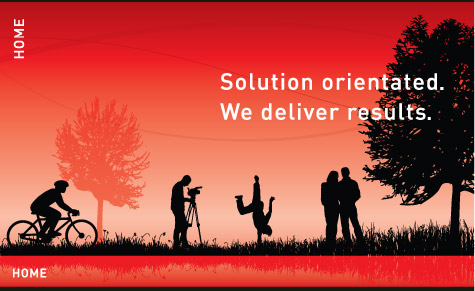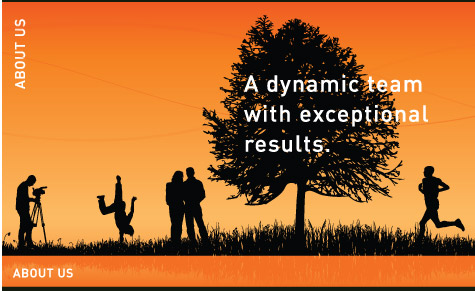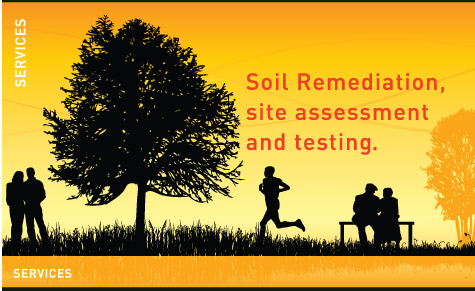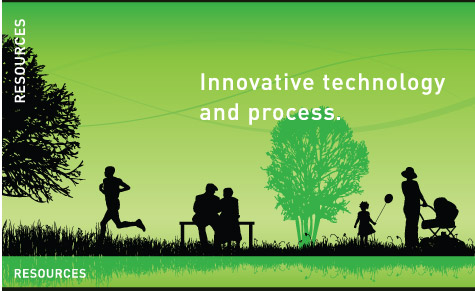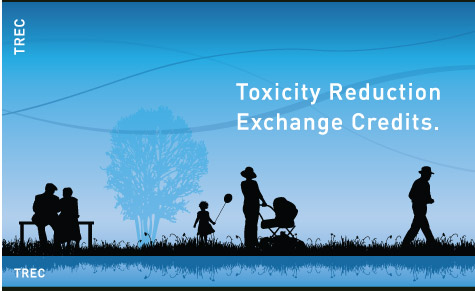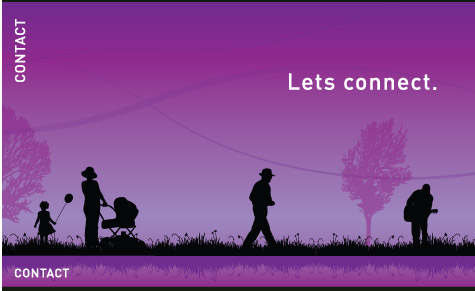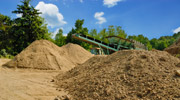

150% sigh of relief
08.02.2012
Contaminated land sites can have significant negative impacts on the environment, local households and businesses. They provide a substantial barrier to redevelopment of the land and are a source of market failure to bringing back into use, land that had been blighted by a previous industrial life.
The tax relief for remediation of contaminated land was introduced by the Finance Act 2001 but during the UK government cost cutting exercise of 2011 had been up for withdrawal. After nearly a year of uncertainty, at the end of 2011, the UK government decided to continue with the Land Remediation Relief, as a key tool to addressing this market failure.
This enhanced tax relief allows capital costs connected with cleaning up contaminated land to be treated as revenue expenses, and permits 150% of qualifying revenue expenses to be deducted in the profit and loss account. If the company makes a loss after these extra cost deductions it can claim a tax credit.
So what is it worth? In short, a company may treat qualifying land remediation expenditure as if it were an amount equal to 150% of the actual amount of expenditure and claim relief for that enhanced amount in the relevant accounting period. To qualify for tax relief the money spent on remediation must meet the following criteria:
• It is spent on land which is contaminated
• It is spent on remediation as defined by the Inland Revenue
• It is spent on paying employees and buying materials or is spent on sub-contractors
• It would not have been spent if the land was not contaminated
• The cost was not subsidised by anyone else
The relief is only available to companies, not to individuals or partnerships and is not due if you are responsible for the contamination or added to it. You will need to claim for this land remediation tax relief in your tax returns.
If you have any queries in relation to remediation of contaminated land and landfill, please contact Shift Soil via email info@shiftsoil.co.uk, or phone us on +44 (0) 1895 272223 to talk.
Please ask us to pass on our summary document on the process and circumstances in which tax relief may be available for the remediation of contaminated land.
Toxicity Reduction Exchange Credit (TREC)
13.05.2011
TREC is a form of carbon offsetting in which credits are awarded during the remediation of contaminated land. These new instruments help to connect those who do not have the resources, but have polluted land, with those who have resources and want to offset their own pollution somewhere else, like through the removal of toxins from the soil environment.
The credits are held on register and administered by TREC Project Analysts (TPA). Their aim is to help incentivise the Contaminated Land Remediation (CLR) market, and to make it easier to do the right thing and clean-up toxic pollution rather than discard it.
Initially the credits will be exchanged through voluntary agreements but we desire to get them registered on an official exchange to facilitate trade and through market forces give just the right level of push.
TREC helps the CLR market focus on the more persistent, toxic and difficult to remediate types of contaminants and aims to be the little nudge needed to help us to do the thing we want to do anyway. Make smart reuse of what is already there and spare the unspoilt parts as much we can. Shift Soil Remediation is proud to help bring the Toxicity Reduction Exchange Credit to market and is seeking a site to run the pilot TREC project on. Please contact us if you think you have a suitable site. Your participation and support is needed.
African Dream
07.02.2011
After a visit to the mother continent last month, the Shift Soil team are again struck by the beauty of Africa and the potential of its people and resources. The continent is littered with valuable resources but the extractive industries amongst others have left many scars across the land, lakes and seas and threaten a healthy future for its people.
In most of Africa, slow output growth has been accompanied by soil loss and falling output per head while food imports have risen. Faster growth in agriculture is a precondition for poverty reduction and sustainable economic growth. This huge continent is ‘famished’ in terms of the infrastructure needed to lower the cost of bringing goods to a hungry global market which would simultaneously lead to raising its own people’s living standards.
The region has always been rich in almost all types of mineral resources and enjoys masses of bio-diversity but of particular interest right now to everyone is the growing number of oil fields discovered off West Africa, like the Jubilee oil field off the coast of Ghana, estimated to hold between 650 million and 2 billion barrels of recoverable oil. With new opportunities, come threats of poor environmental stewardship.
Seeking trade, the African’s are particularly open to working with outside partners to develop and encourage a virtues circle of rising incomes, increasing investment and rising human capital. However this may come at the expense of the environment. Africans are aware of the natural benefits that their own local ecosystem provides, such as plants which rid waters of toxins/pollutants or creatures like the humble dung-beetle which provide the decomposition of waste, but there is often a discontinuity between the true value of these ecosystem services and how much pressure the environment can handle before the damage becomes irreparable. The cost of a loss in these ecosystem services is hard for us to quantify yet the effects are clearly visible.
Shift Soil has been eyeing the potential for offering our environmental remediation services more extensively across the continent and in 2010 produced a briefing document on Soil Contamination in West Africa. This is available (in English and French language versions) on request simply by emailing info@shiftsoil.co.uk, asking for your copy.
Drivers through time and the routes to the Shift Soils solution
05.10.2010
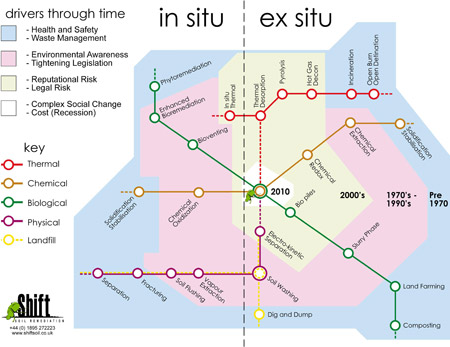
Shift Soil gave a talk to the local London brownfield industry on the 5th October during the Brownfield Remediation 2010 conference. Covering the socio-political changes that drove the developments of soil remediation that ultimately lead to the Shift Soil solution. We developed an info-graphic to help communicate in a very complex industry the clearest developments along technological solution lines and the learning and growth of the industry through the last few decades. It also has the look that fans of public transport might know and love.
While detailing the birth of popular environmentalism that led to the banning of DDT in 1972 and the rise of industry from Exxon Valdez oil spill in 1989 the talk led principally to the reasons for Shift Soils solution to the industries problems to find a fast, cost effective, flexible and reliable solution to polluted land, not to speak that we clean-up the contaminated land on-site offering clear environmental advantages over simply dumping the soil in a landfill.
Made by Crown Bio Technology
25.05.2010
Shift Soil Remediation will now employ Safe Soil Testers made by Crown Bio Technology. These are innovative devices allowing rapid onsite soil toxicity screening and mapping. What this ultimately offers is cost savings in time, and money as only contaminated soil needs be treated and clean soil can be easily identified. These real time results help with cost-effective decision making.
The Safe Soil Tester is designed to detect carcinogenic hydrocarbons using naturally luminescing marine bacteria that is instantly affected by contaminated soil and reduce their light according to the level of toxicity. Much like the old canary in the mine, these helpful bacteria’s death offers us a way to quantify on a scale the toxicity present in the soil matrix.
These results are auditable due to the integrated GPS receiver which is used with Geographical Information System’s (GIS) software to create site maps. This all leads to an increase in the confidence in the results and greater clarity for the customer in terms of what they are paying for to clean.
The Safe Soil Tester was one of the first technologies approved for EU wide use using the Environmental Technology Verification scheme.
With 3.5 million potentially contaminated sites in the EU, this kit based real-time analysis tool offers fast, effective toxicity screening and extends our capabilities to offer the client the lowest cost solution to toxic contaminated land.
Acting as a local agent for Biodyne
24.05.2010
The power of natural microbial solutions too many environmental problems are here with us now. Biodyne has over the last 2 decades cultured many effective and naturally occurring bacteria and fungi, selected for their special degradation capabilities.
Shift soil Remediation will now act as a local agent for the excellent Biodyne range of microbial products, backed by superior quality control, the Biodyne range of products offer bioremediation solutions for soil, sludge, groundwater, surface water and bioaugmentation for domestic and industrial wastewater treatment.
Their novel brewing technology are a decided edge in procuring the greatest number of viable microbes when compared to the powdered and liquid products offered by others. This gives us the best chance of getting the remediation right at the right price. No point in paying for things that don’t work or just don’t work well.
The range also includes products for agriculture that create healthy root systems using less fertilizer and compost.

